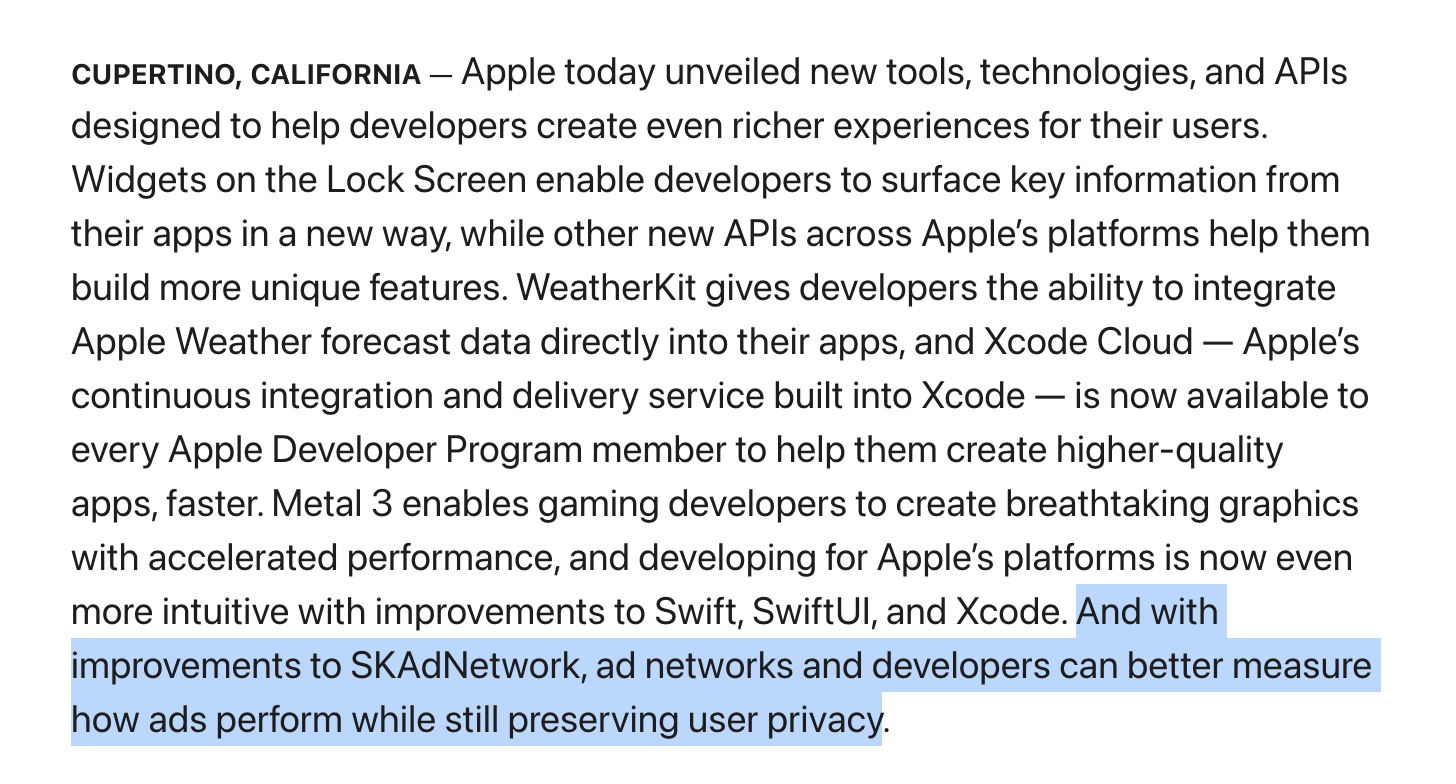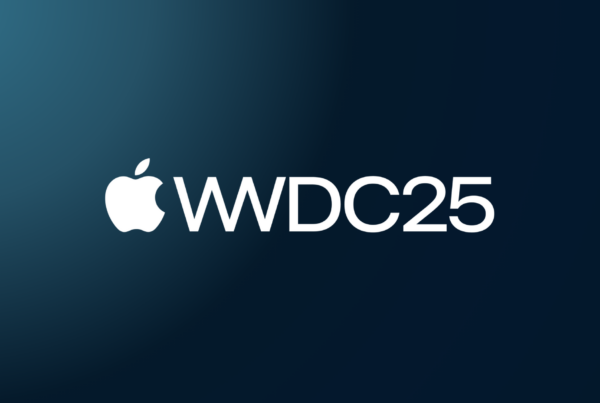WWDC 2022 brought with it the usual news of major new consumer-facing features and hardware. But perhaps the most exciting news for app marketers was the promise of major improvements to Apple’s native app attribution tools, stating in a press release that accompanied the keynote:

This was followed shortly afterwards by new SKAdNetwork documentation, detailing what we can expect from SKAdNetwork version 4.0 “later this year”.
In short: we’re getting some major improvements that should make SKAdNetwork far more fit-for-purpose for app marketers – but notable restrictions still remain. Below we summarise the new functionality, and how we expect it to impact ad tech.
Multiple postbacks (up to 3)
With SKAN 4.0 advertisers will be permitted to receive up to 3 postbacks (up from 1) over increasing time windows: 0-2 days, 3-7 days, and 8-35 days, respectively.
This is major news for advertisers looking to optimise on conversions – which can occur a long time after the initial install – since they will now be able to do that for up to 35 days without delaying their ability to measure earlier events (such as the install itself).
This is a significant change vs. the current state: where the install and all post-install conversions must be batched into a single postback, thus delaying the notification of the install until after the last conversion has been recorded (for example: an app waiting 5 days for a conversion will also have to wait >5 days to learn that the install had occurred).
The key impact we expect to see here for ad networks and DSPs is more ability to optimise on both installs and downstream events: as the install postback can now be received without additional delay, with further downstream conversions still available to record if they occur.
However, it’s worth remembering that all postbacks do still remain restricted by the initial delay + Apple’s random 24 hour timer: meaning that delays of >24 hours will still be the norm. Hence, actual “realtime” optimisation remains off the cards.
Significantly more campaigns IDs available
The Campaign ID is now referred to as the ‘hierarchical source identifier’, and as the new name suggests it is designed to communicate more than just a campaign ID, now permitting up to 4 digits (theoretically 10,000 values) – a massive increase from the previous restriction of 2 digits (100 values).
However, it comes with the significant caveat that the source identifier MUST meet Apple’s privacy threshold requirements, which from prior experience tend to be quite strict.
As such, Apple indicates that advertisers can use the new source identifier field in a hierarchical manner: with the first, second and last two digits being independent, but only the last two digits guaranteed to be returned. Used in this way, the advertiser now has potentially hundreds of IDs to play with (vs. the previous 100) – so long as they meet the privacy requirements.
For example: advertisers may use the last 2 digits to represent the campaign (for up to 100 campaigns), the second digit (in conjunction with the last 2) for location, and the first digit (in conjunction with the other 3) for something more detailed like the ad placement.
Conversion Value IDs can be received (in part) with less privacy threshold restrictions
Conversion Value IDs remain a maximum of 6-bits (64 values available), but Apple now defines the use of the 6-bit ID as “fine-grained”, and accordingly restricted by the existing privacy threshold limitations – where advertisers will not reliably be able to get this data back in the conversion postback.
However, what’s new is the ability to set and receive a “coarse-grained” Conversion Value: up to 3 values (‘low’, ‘medium’, ‘high’), which is less restricted by privacy thresholds
As such, advertisers can more reliably receive conversion data with the low granularity of low/medium/high. The full 6-bit ID will only be available in postbacks if the highest privacy threshold has been reached.
Support for web-to-app
Previous versions of SKAdNetwork only worked for app-to-app advertising. With 4.0, advertisers can now attribute web ads which direct users “to the advertised app’s App Store product page”.
Bonus: a little bit more insight into what drives privacy thresholds…
Although we still didn’t get any explicit information about the mechanics of privacy threshold (and probably never will – since this would encourage gaming them) the new SKAdNetwork documentation does shed a little more light than before.
Specifically, it’s mentioned that the key metric driving privacy is number of installations of the advertised app:

As this is inline with much of the analysis done across ad tech since SKAdNetwork’s release, it won’t come as much of a surprise to most marketers.





